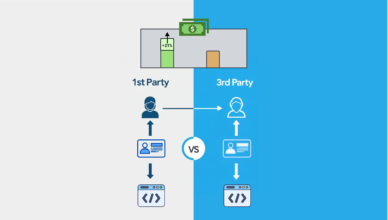The amount of data readily available to advertisers is in decline. This is a result of the deprecation of third-party cookies, stricter privacy regulations, and changes to mobile identifiers. However, utilizing first-party data has been touted as a possible solution to the problem.
Brands have more first-party data than ever before through avenues such as purchase data and email interactions. Publishers have an understanding of users that advertisers crave, leading to advertisers seeking out direct relationships with publishers to help address the data deprecation challenges they face.
For publishers to make the most of first-party data there’s some education required to show this value internally, and externally to advertisers. In turn, this will enable publishers to recognise the value of their data and be fairly compensated for its use.
Shifting an organisation’s focus to first-party data can be a fundamental change to any business. However, there are a couple of common pitfalls for publishers to watch out for and addressing these could be the key to success.
Look at all of your data
It’s important to make sure you’re looking at the full depth and breadth of your first-party data sources. A common belief among publishers is that if you don’t collect declared data around characteristics like age and gender, you won’t be able to entirely rely on first-party data. This concern ignores that publishers have a lot more than just declared data at their disposal.
Publishers have the unique ability to see data based on consumption habits in real time, from what users are looking at, how often, and for how long; interaction with content – which types of content do users spend the most time interacting with; to engagement with ads – who is exposed to ads, and what ads they click on; and much more from a multitude of sources.
This understanding of user behaviour can enable an advertiser to really understand their consumers and deliver the right advertising experience to them with data that comes directly from the source, not from an opaque data set. For example, publishers can detect if a user is in the market for a car by observing how frequently the user has visited car review pages in the past seven days. A publisher can also add a level of nuance, for example, if that user has engaged with content about electric cars.
Choosing to utilise these additional insights can be gold dust for advertisers, and provide a competitive advantage, as it reveals more about their target audiences and, in turn, enables them to make better targeting decisions through an understanding of what is important to the consumer.
Get serious about sales enablement
While prioritizing first-party data within the current – and future – digital advertising landscape is a positive move, it does mean internal teams will have to make changes to the way they operate. One of those teams is Sales.
Your Sales team may have to fundamentally change the way you go to market and position your value to advertisers. But, before they are asked to go down that route, it’s important that the team understands the thinking behind the decision to focus on first-party data. Understanding the reason and the benefits of the shift, for both your business and your advertisers, will make sure that your Sales team is able to get its approach right going forward.
To do this, it’s advised that publishers spend time creating their own Sales story, where you share how data fits into your wider offering and not just in the context of ad sales. This approach can be seen in the data strategies of Bauer Media, Business Insider, and News UK.
Keeping this feedback loop open between your Sales team and your Data and Ad Ops teams is vital on the data strategy journey. The people on your Sales team are ambassadors to the market and are best placed to inform your business on what the market is receptive to. And you can then use this information to tweak things.
Getting it right
For the past decade or so, programmatic technology has meant that publisher data has been aggregated, and ownership of that data taken out of their hands. This has come at a cost to user privacy and left publishers unable to maximise the potential of their data.
As data continues to deprecate, first-party data is the greatest asset a publisher has – whether that data is declared or otherwise. However, with that comes the need to make some internal adjustments.
Making these adjustments and embracing the full breadth of your data will put you in the ideal position to protect the privacy of users, show advertisers the true value of your data and, in turn, continue to bring in revenue.









